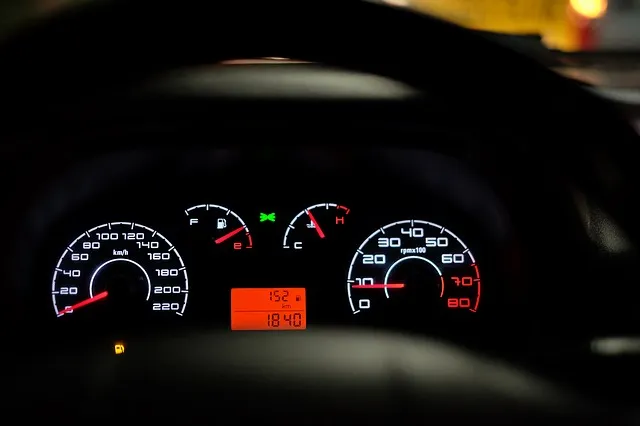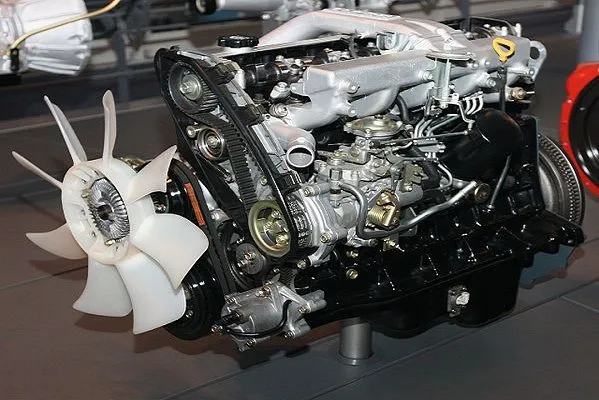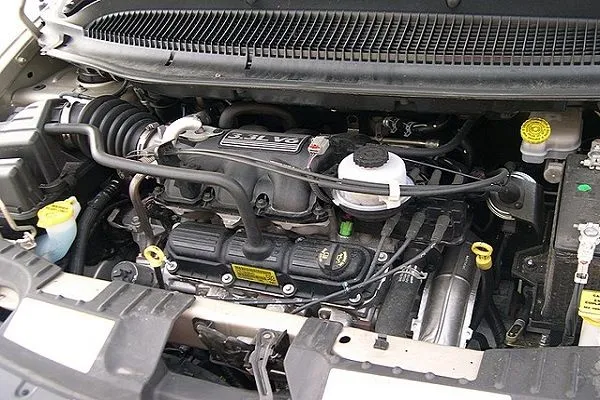A few days back while driving on the highway on my way home from work, I suddenly took notice of an unusual positioning of the needle indicating the car engine temperature, it has risen above normal. I tried as much as possible to concentrate on driving while taking note of the needle in the hope that I would be able to get a good place to park and examine the engine before the needle gets to the red region, perhaps I could have an idea of what is wrong.

Unfortunately, I found myself pulling to the extreme right-hand side of the road within few minutes. The temperature rose rapidly and got to the red zone. What could have suddenly gone wrong with the engine system? By the way, the car got to Nigeria from United State a few months ago. Though not new (we call it tokunbo around here), I have been using it as such without any major issue till this particular day. I opened the bonnet and waited for the engine to cool down a bit, I thought about calling my mechanic (roadside, by the way) but later decided against it. I needed to have an idea of what is wrong so that I do not end up being exploited.
After about twenty minutes of waiting, I closed the bonnet and started the engine. The temperature of the engine seemed to have normalized and I drove home without any issue. Throughout the night of that day, I kept on wondering what in the world could have activated such a short drama. The following morning, I started the engine and commenced driving to work as usual with the drama of previous day still fresh in mind, my eyes kept wandering towards the temperature needle on the dashboard. With the air-condition powered on, nothing really happened until few miles to my workplace when the temperature started rising dramatically like the previous day. I switched off the air-conditioning system and the temperature went down rapidly. Interesting stuff!
Even though the temperature started rising few seconds after switching-off the air conditioning system, it started rising again soon after but I manageably got to work without the temperature going overboard. What the **** is going on?
I could not concentrate at work. I jumped into the steemstem channel on discord to sought for direction from the engineers, especially people like @adetola, @temitayo-pelumi and @rharphelle that have posted series of articles about automobiles. Trust steemstemians, different ideas and solution started flying in. Even though all the ideas were guesses, they pointed to only one thing - there is something amiss with the cooling system of the vehicle. Not satisfied, I put a call through to my cousin who seems to be more experienced with automobiles and he confirmed my suspicions with a rather confident answer;
Check the thermostat!
Thermostarts and the engine cooling system
There are several acceptable definitions for a thermostat but in a layman's language, a thermostat is a device that senses change and then regulate the temperature of a system within a pre-determined range. It is applicable in several electronic system such as iron, air-conditioners, ovens, refrigerators etc. In order to fully understand the function of a car's thermostat, a basic understanding of the car cooling system is necessary.

The engine of a moving vehicle produces an enormous amount of controlled explosion the magnitude of which depends on the number of cylinders in the engine. These explosions are caused by fuel ignition by spark plugs within each cylinder to propel the vehicle down the road. Consequently, cars are always equipped with cooling system to minimize heating as a result of the explosions which could destroy the engine in a matter of minutes.
The cooling system of an engine ensures that engine is kept at a relatively constant temperature for optimum performance irrespective of the temperature of the environment. Below the optimum temperature, more fuels are utilized by the engine and the magnitude of emission shoots up while above the optimum temperature, the engine can get destroyed.
Sometimes depending on the type of vehicle, the various components of the engine's cooling system include the radiator compartment where the temperature of the coolant is brought down before being circulated back into the engine, a cooling fan directly behind the radiator, pressure cap to keep the pressure within the system constant, water pump that circulates the coolant through the system, a bypass system, freeze plugs, head gaskets and intake manifold gaskets, heater core, hoses, the coolant itself and of course, the thermostat which serves to regulate the temperature of the coolant.
A typical cooling system works by continuous flow of liquid (the coolant) which is maintained by the water pump. Heat from the engine is transferred to the coolant as it passes through the engine blocks and heads before making its way through a hose to the radiator where it get cooled by air stream before returning back to the engine to absorb more heat. The source of the air stream that cools the coolant is from the grill in front of the car or from the fan as the case may be.
So where does the thermostat functions?
The thermostat works to keep the engine at optimum working temperature by regulating the flow of the cooling liquid moving from the engine compartment to the radiator. As such, the thermostat is usually placed between the engine and the radiator. When the coolant's temperature falls below the optimum temperature required for the engine to function, the thermostat restrict the movement of the cooling liquid to the radiator. This action forces the cooling liquid to be directed through the bypass system back into the engine compartment and the circulation continues as such until the optimum working temperature of the engine is reached. When this happens, the thermostat opens to allow the cooling liquid into the radiator so as to ensure that the optimum temperature is kept constant.

A faulty thermostart will definitely cause the cooling or heating system of a vehicle to malfunction. Consequently, the optimum working temperature of the engine will become difficult to attain. It is either the temperature falls short of the required or above it which in such case, the engine is said to be overheated.
Is the thermostat really necessary in a vehicle?
The above question is one of the most debated questions in the world of automobiles, especially in the tropical region. From my little research, every other thing being constant, most vehicles will function normally without the thermostat embedded within the cooling system. However, the engine might not perform optimally and as a result wear out before its stipulated time.
The argument, however, has always been that the thermostat is only necessary in temperate or cold regions where the coolant's access to the radiator needs to be blocked in order for the engine to get to its optimum temperature. In a much hotter tropical region, even without blocking the coolant's access to the radiator, the optimum working temperature of the engine would be reached within a short period of switching-on the engine.
From my little experience and research, during a typically coldest period in the tropic, a car without a thermostat would only need between five to ten minutes before reaching the optimum temperature. This waiting period might not be necessary if a car is armed with the thermostat because the optimum temperature will be reached faster as a result of blocking of the coolant from getting access to the radiator.
Pros and cons of having the thermostart in a vehicle
After rummaging through the series of arguments for and against the thermostat in a vehicle operating within the tropical region, I have been able to draw up the advantages and disadvantages of having it in one's vehicle. The pros and cons are highlighted below;
- The vehicle tends to function optimally always, thereby promoting longevity of the engine unlike a vehicle without thermostat which will almost always struggle to attain optimum temperature.
- The fuel efficiency of a vehicle with a thermostart is always spot-on. The Engine Control Unit (a.k.a brainbox) of a vehicle without thermostat continues to inject fuel into the engine in order for optimum working temperature of the engine to be reached thereby resulting in burning more fuel.
- Vehicles with thermostat embedded run more quietly most of the time simply because the fan of the colling system do not have to work always. The fan will only work when the optimum temperature of the engine is about to be exceeded and the airjet from the grill in front of the car becomes inadequate to cool the coolant in the radiator. A vehicle without thermostat will run loudly because the fan would be running constantly.
So how did I solve my own case?
Like I said earlier, a malfunctioning thermostart will mostly always get the engine overheated. Even though there could several other reasons for a car engine to get overheated apart from a faulty thermostat, an overheated engine most of the time eventually gets the thermostart damaged.

Therefore, in my own case, all indication point to the thermostat as said by my cousin. I managed to get the car to my roadside mechanic and asked him to remove the thermostart which he did. The intention is to drive the vehicle without a thermostat and see if it will still overheat but to my satisfaction, it has not overheated up till today. Even though I have an intention of replacing the thermostat in the nearest future, the vehicle is serving me for now.
How about the optimum temperature?
Basically, what I do whenever I switch-on the engine is wait till the temperature indicator on the dashboard gets to the level that it always gets to while the thermostart was still embedded before proceeding on my journey. In my own analysis, I think the thermostart was invented in order for the vehicle's engine to quickly get to the optimum working temperature, especially in the cold region. Cars without thermostat in cold regions will definitely take quite a long time before getting to the optimum working temperature after switching-on the engin, that is if it will ever get to it.
A lot of folks around here have given testimonies of using their vehicles without the thermostart and the vehicles have never given any issue for years.
What do you all think? Should I replace the thermostat of my vehicle as soon as possible or I should just continue using it as such? Why? Your inputs are highly needed.
Thank you!
References
If you write STEM (Science, Technology, Engineering, and Mathematics) related posts, consider joining #steemSTEM on discord here. If you are from Nigeria, you may want to include the #stemng tag in your post. You can visit this blog by @stemng for more details. You can also check this blog post by @steemstem here and this guidelines here for help on how to be a member of @steemstem. Please also check this blog post from @steemstem on proper use of images devoid of copyright issues here
